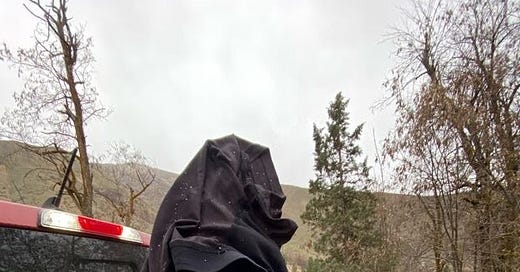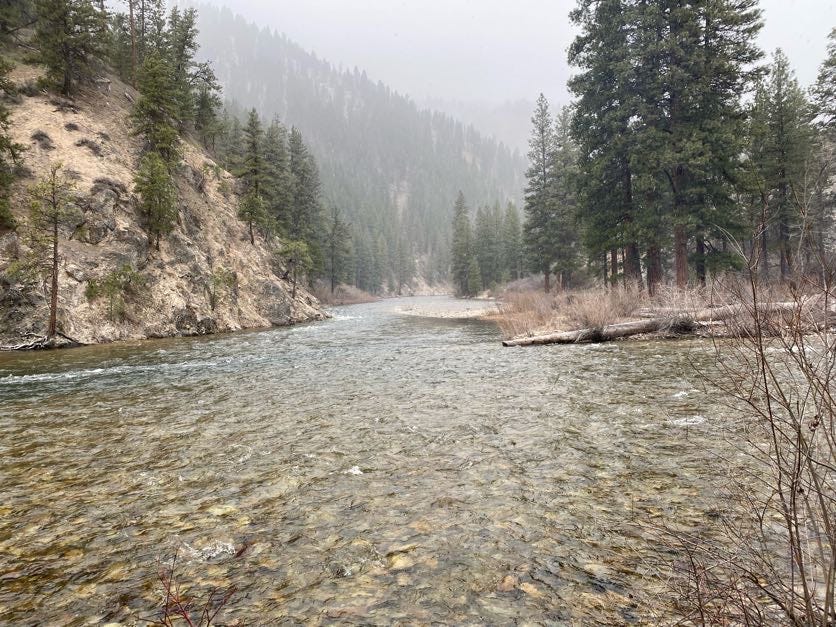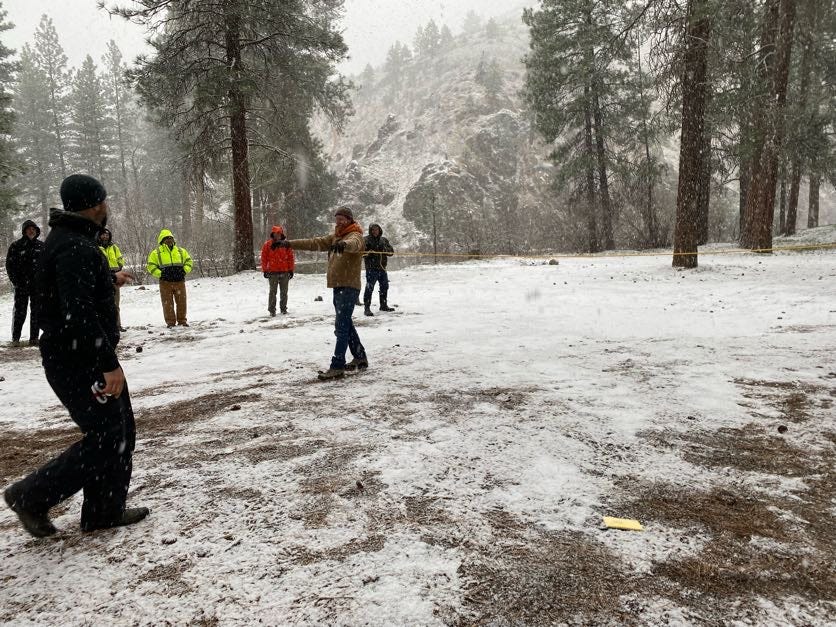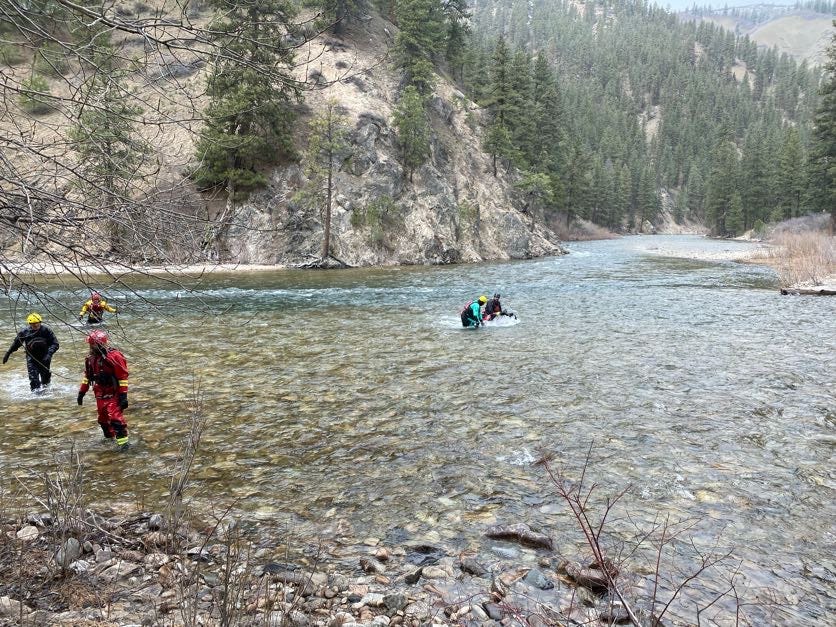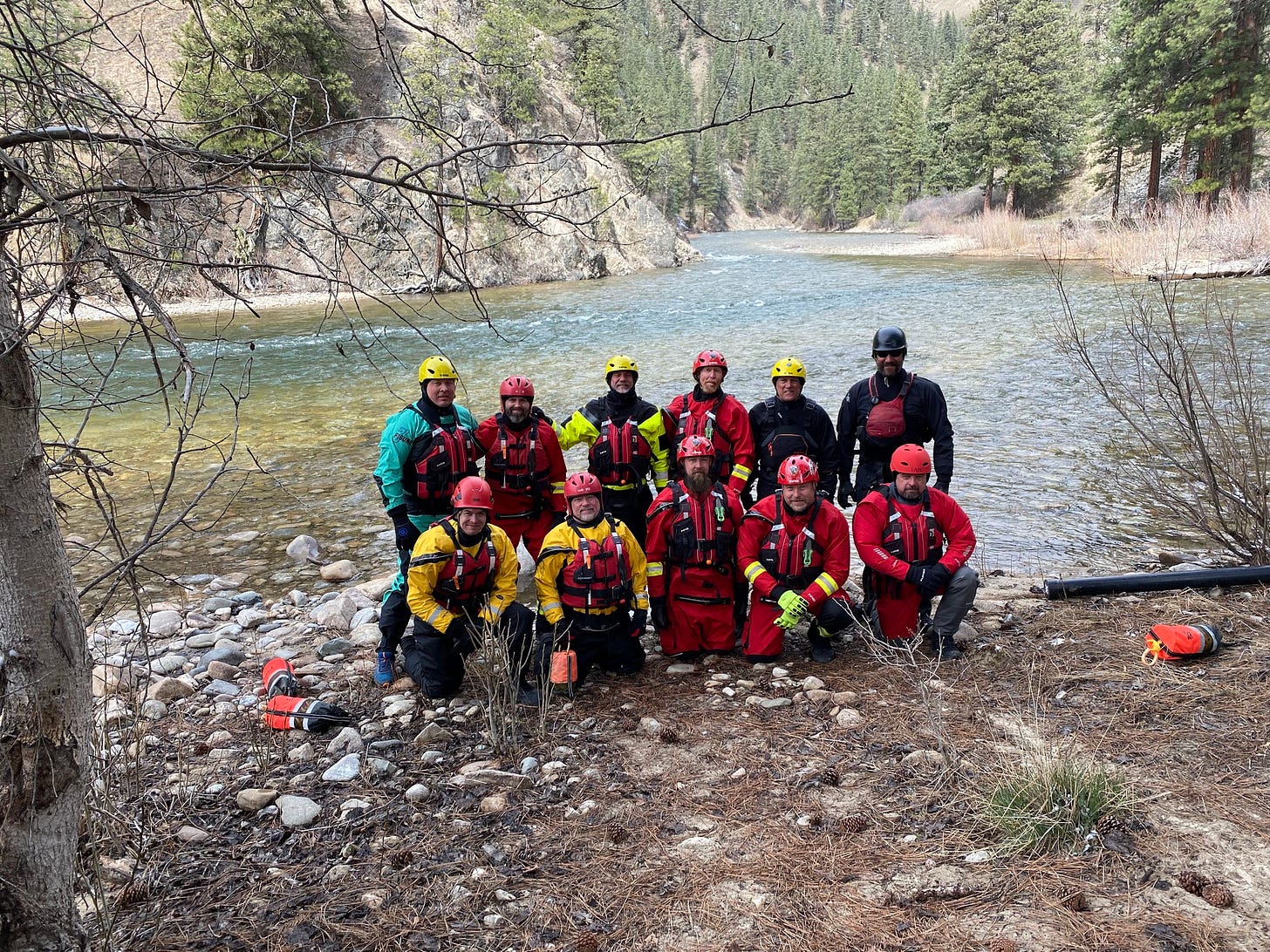As Sunday morning rolled around it was cold. So cold in fact that the slightly damp underwear I had left in my tent was frozen completely solid. I wouldn’t know until later that day, but I would be forming a new life rule out of this experience, which was “If your underwear can stand on its own, it’s probably not a great day to go swim.” Life Pro Tip right there...
Anyhoo, once I shook off the frost I packed up the tent I had pitched in front of an abandoned mine and made my way up to the area of river where we would be working that day. As we drove in we realized we were at the confluence (aka joining) of two separate rivers... The north fork and the middle fork of the Boise river. This terrain offered some interesting aspects including a deep shelf where the two water sources met, as well as some ridiculously rocky cliff faces that we would later have to traverse.
But, as we sat around waiting for everyone to arrive it started to snow. We all scrambled to get our axes and chainsaws out to get some old logs and slag cut up to get a fire going, one that we would stoke all day to try and take a bit of the chill off. Once we had a fire going and the rest of the team arrived, we wasted no time and dove right in to the curriculum.
For the morning we focused on stabilization techniques for a foot entrapped patient — A common occurrence when people walk across the river bottom and get one or both feet snagged on something along the river bottom... wood, rebar, old cars, or any other number of things.
If the patient is heads up and fighting the current, we have limited time to get to them with our swimmers or ropes to stabilize them and make sure they have an airway before trying to release them... Sadly, if a person is heads down in this situation it will likely turn into a recovery effort. Point being, never walk (if you can help it) directly across a river bottom.
Once we were done with the scenarios and practice, it was time to put on our suits in the snow. Though we were all moaning, the reality was that this training was great. The likelihood of our team(s) getting called out to perform a swift water rescue in the snow is actually quite high (we have winter roughly seven months of the year) and it was great to learn and employ our new techniques with an ice cream headache and numb hands.
And this day I would truly gain an appreciation for the power of our western rivers. We all waded into the water on a section that frankly did not seem too wild. The water was pumping but if I had been asked to swim across it, I would have gone out there with little hesitation... that is until we did our first drill. Our instructor and a partner stood about 20 yards down river from us holding a 5” diameter PVC pipe... The idea was for us to float down and run into this pipe chest first. The ask was to hit the pipe and then simply crawl over it.
Having done thousands of pull-ups, muscle ups, and jiu jitsu my entire life I thought this would be a cake walk. I floated my happy butt down the easy rapids and the second my chest smacked that tube I was up and over it... Or, so I thought I would be. The reality was… I was stuck.
The water pressure building up on my back in those short moments was insane. In this light early spring flow it felt like I had three hundred pounds of concrete on my back which kept me from getting any sort of mechanical leverage to lift my body up... the other problem was that is was too shallow for me to go under the tube... Had this tube been a tree or other debris that couldn’t be easily lifted up (which it was) I would have died there after struggling for some time before hypothermia set in.
Insane. Humbling. Raw power.
Every single other person in the course got the same treatment and visibly had the same reaction to the morning helping of humble pie. From there we went through a few other scenarios and practiced our techniques for foot entrapped patients, focusing on stabilization of airways throughout the whole process.
Then, after a quick warm-up by the fire we all gathered our gear and walked up the road about four hundred meters. There we were greeted by class 3-4 rapids, debris in the water which included downed trees, and an opposite bank that was sheer cliff face. With little preparation our instructor told us to face down stream (so we couldn’t see him) and wait for a whistle blast. We knew that we were about to put all of our skills to the test and have to “save” him as a team through a couple of very realistic scenarios in truly scary terrain. The videos we captured are pretty cool and show the competency we all gained after a long weekend of training — videos I will share once I have them in a later post — and led to our groups overall certification of being “swift water rescue technicians.”
